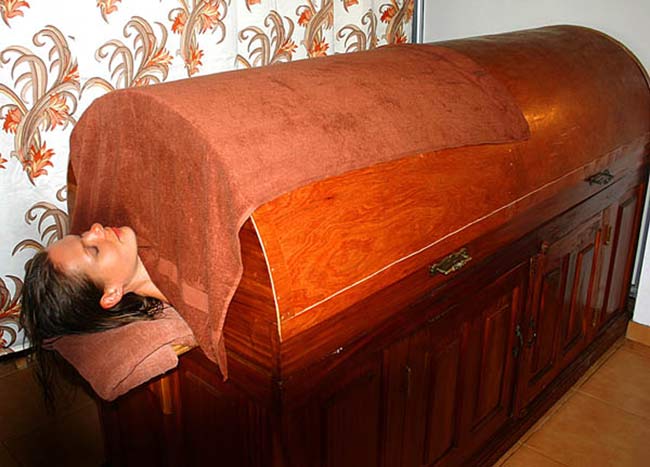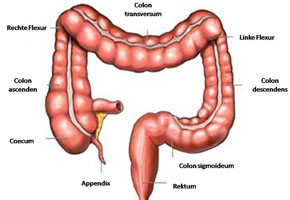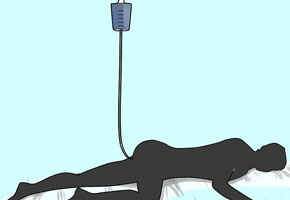
According to Ayurveda – “Health is a state in which the dynamic balance of doshas, dhathus and malas is maintained, the metabolism is at optimum level and soul, mind and sense organs assume sublime position.”
In simple words – “Health is Equilibrium of Tridosha in the body”
Diseases are the manifestations of disturbances in the equilibrium of body constituents (Particularly Doshas).
In simple words – “Diseases are imbalance in Tridosha in the body.”
In the formation of any disease, whatever be the causative factor, the essential part is imbalance in tridosha. Ayurvedic Treatment aims at restoring the equilibrium of these body constituents and bring them back to normal.
There are two basic forms of Ayurvedic Treatment:

Panchkarma is a Five-Fold Detoxification or Cleansing Program which is used to eliminate the deeply seated toxins or doshas from the body.
Technically, “Panchkarma is a comprehensive purificatory treatment methodology which primarily aims at the exhaustive elimination of morbid materials fixed to human tissues causing various diseases.”
The Three Stages/Steps of Panchkarma Therapy:
Mainly Two Techniques are used:

Warm, medicinal oils are applied in large amounts all over the body. Some practitioners use sesame oil for all three constitutions. Others use medicated oils like mahanarayan oil. Still others usemedicated oils in specific body sites, such as on the chakras and marma points, or at specific trouble spots. Essential oils may also be employed according to the doshas. It is the use of the oil that is important, and not the massage technique or training. (Actually, a professional massage produces the same effects as snehana and svedhana).
Along with the application of oil, intake of oil or ghee(snehapana) is also recommended. Sesame oil or ghee is used for Váyu, sunflower or ghee for Pitta, and mustard, canola, or flax seed oils for Kapha.
Oil Uses : Oils help loosen and liquefy toxins and humors in the skin and blood (called the outer disease pathway), dislodging and removing the heavy, sticky toxins from the smallest channels. Thus, toxins begin to drain from the central disease pathway (deeper tissues) and start to flow into the GI tract. Secretions are also activated, enabling easier doaha transport of toxins (ama) and wastes (malas) as they return to the GI tract for elimination. Oil lubricates and protects tissues from damage, as ama returns to the GI tract. Finally, since Váyu is responsible for movement, oil lubrication restores proper Váyu functioning, allowing for proper flowing of wastes and toxins to their removal sites.

Warm, medicinal oils are applied in large amounts all over the body. Some practitioners use sesame oil for all three constitutions. Others use medicated oils like mahanarayan oil. Still others usemedicated oils in specific body sites, such as on the chakras and marma points, or at specific trouble spots. Essential oils may also be employed according to the doshas. It is the use of the oil that is important, and not the massage technique or training. (Actually, a professional massage produces the same effects as snehana and svedhana).
Along with the application of oil, intake of oil or ghee(snehapana) is also recommended. Sesame oil or ghee is used for Váyu, sunflower or ghee for Pitta, and mustard, canola, or flax seed oils for Kapha.
Oil Uses : Oils help loosen and liquefy toxins and humors in the skin and blood (called the outer disease pathway), dislodging and removing the heavy, sticky toxins from the smallest channels. Thus, toxins begin to drain from the central disease pathway (deeper tissues) and start to flow into the GI tract. Secretions are also activated, enabling easier doaha transport of toxins (ama) and wastes (malas) as they return to the GI tract for elimination. Oil lubricates and protects tissues from damage, as ama returns to the GI tract. Finally, since Váyu is responsible for movement, oil lubrication restores proper Váyu functioning, allowing for proper flowing of wastes and toxins to their removal sites.
Consists of the five essential purificatory therapies, namely.

The kapha toxins accumulated in the body and the respiratory tract are effectively removed by Vamana, one of the five therapies of Panchakarma in Ayurveda. Vamana is therapeutic vomiting, which is a medicated emesis therapy. People with high imbalance of kapha are given this type of treatment, which loosens and mobilizes the toxins, in an effort to eliminate them from the body. Waste products (vitiated dosha) are eliminated through the upper gastrointestinal tract. The vitiated kapha are eliminated through the mouth. After vomiting, the sinus is cleared, which in turn provides relief from congestion, wheezing and breathlessness. Know more about Vamana therapy by going through the following lines.
Objective
The objective of Vaman therapy is to induce vomiting in the person to get rid of the mucus that causes excess kapha. During the treatment, kapha aggravating foods such as basmati rice and yogurt with salt are given to the patient, in the morning. Thereafter, heat is applied to the chest and back, in order to liquefy kapha. A drink made by mixing madanaphalam, licorice, honey or calamus root tea is given to the patient, after the kapha is liquefied. Salt or cardamom may also be added to the medicated drink. Consumption of the drink triggers vomiting in the patient. If vomiting doesn’t occur spontaneously, then it is induced by rubbing on the tongue.

Procedure
The patient feels better after vomiting for four to eight times. This is followed with the internal administration of ghee treatment and a steam bath. After performing Vamana therapy, the patient should take rest and not consume heavy food. Fasting is highly recommended immediately after Vamana therapy. The patient is also given certain herbal cigarettes to smoke. In addition to this, it is strictly recommended that the natural urge to urinate, defecate, sneeze and cough should not be suppressed. If vamana is administered properly, the person feels relaxed and able to breathe freely. Lightness in the chest is often experienced after undergoing the therapy. The person thinks clearly, develops a clear voice and good appetite. All the symptoms of congestion vanish away after the proper administration of Vamana therapy.
Health Problems Treated By Vamana Therapy
Vamana Therapy is suitable for treating a number of diseases including anemia, chronic indigestion, sinus problems, cough and cold. Certain chronic diseases like diabetes can be treated by this therapy. People suffering from edema, epilepsy, skin diseases, fever, loss of appetite and lymphatic obstruction can find this therapy beneficial. Nausea and food poisoning are effectively cured by Vamana therapy. In case of repeated attacks of tonsillitis, most of the Ayurvedic practitioners suggest to opt for Vamana therapy. Latest studies in the field of medical science suggest that certain symptoms of asthma can be cured by this highly effective form of Panchakarma.

In the formation of any disease, whatever be the causative factor, the essential part is imbalance in tridosha. Ayurvedic Treatment aims at restoring the equilibrium of these body constituents and bring them back to normal.

Ayurveda, the science of life, emphasizes on the adoption of a number of preventative and healing therapies, which can purify and rejuvenate the body, mind and soul. The medicinal form of science is not just a healing system, but also an art of appropriate, healthy and disease-free living. It aims at increasing the longevity of people of all ages. One of the therapies of Ayurveda, Panchakarma encompasses five treatments that can prevent and heal a number of diseases. One of the types of Panchakarma is Virechana, a purification therapy.
The Treatment
Virachana therapy is defined as the medicated purgation therapy, which cleanses the Pitta and purifies blood, by clearing the toxins from the body. The treatment concentrates on the toxins that are accumulated in the liver and gall bladder. The gastro-intestinal tract is also cleansed by Virachana therapy. This treatment is usually administered for three days after Vamana treatment, but its duration may vary from case to case. In fact, Virechana can be administered directly after purvakarma, without undergoing the Vamana therapy that precedes Virechana.
Procedure
While performing the Virechana karam, the vitiated doshas are eliminated through the rectum. The drugs used for the purgation therapy are vitiate the doshas and bring them into the abdomen. During the procedure, the patient is subjected to Oleation first, then Fomentation, which is followed by Emisis and Samsarjana Karma (post operative). The internal Oleation is followed for three to seven days. Thereafter, a medicated steam bath is performed for three days. A light and warm diet is prescribed for the patient, a day before starting Virechana karma. However, certain factors like body and mind constitution, age of the person, mental condition should be considered, while opting for Virechana karma.
Herbs Used For The Therapy
Virechan therapy aims at cleansing the sweat glands, small intestine, colon, kidneys, stomach, liver and spleen. A number of herbs are used for the treatment, which serve as laxative. Some of the herbs preferred by majority of Ayurvedic practitioners include senna, prune, bran, flaxseed husk, dandelion root and psyllium seed. Cow's milk, salt, castor oil, raisins and mango juice are also used for the treatment. When the laxatives are consumed by the patient, he/she is recommended to follow a restricted diet. This proves beneficial for the patient.
Health Problems Treated By Virechana Therapy
Virechana can treat a number of health problems and uproot them, so that they do not occur again. Skin diseases, chronic fever, piles, abdominal tumors, worms, gout, jaundice, irritable bowel syndrome, gastrointestinal problems and constipation can be effectively cured by Virechana therapy. In addition to these, the therapy is administered to treat diabetes, asthma, goiter, lepracy, headaches, elephantiasis and gynecological disorders. Virechana karma aims to eliminate doshas from kidneys, lungs and sweat glands, which is otherwise not possible by Vamana karma.

One of the main procedures of Panchakarma Chikitsa, Basti karma concentrates on the elimination of the loosened vata dosha out through the rectum. The treatment involves the introduction of medicinal substances, such as, herbal oils and decoctions in a liquid medium, into the rectum of the person. This is because vata is predominantly located in the colon and bones. Herbal concoctions made of sesame oil are generally used for the purpose. Vata disorders can be effectively cured by Basti karma. Common cold, sexual disorders, constipation, distention, kidney, backache, pain in the neck region, vomiting and hyperacidity can also be cured by Basti karma.
If administered properly, Basti karma is an effective treatment that has very few or no side effects on the body. The medication techniques used for the treatment are known as enemas. According to Ayurveda, the enemas are not suitable for people suffering from shortness of breath, chronic abdominal pain, bleeding from rectum, cough, diarrhea and severe anemia. Therefore, barring the exceptions, Basti karma can be adopted to people in order to rejuvenate the body, provide strength and longevity. Go through the following lines to get information on different types of Basti karma and the benefits of the treatment.

Types Of Basti Karma
Benefits Of Basti Karma

Lorem ipsum dolor sit amet, consectetur adipiscing elit. Proin aliquet velit ac eros commodo pretium. Vestibulum dictum tempus nisi, id fermentum justo cursus sit amet. Donec rutrum est nec dignissim imperdiet. Vestibulum ante ipsum primis in faucibus orci luctus et ultrices posuere cubilia Curae; Quisque quis ligula eros. Suspendisse at nulla et magna facilisis sodales vitae ut elit. Class aptent taciti sociosqu ad litora torquent per conubia nostra, per inceptos himenaeos. Morbi hendrerit scelerisque fermentum. Donec dolor purus, pulvinar a facilisis ac, maximus maximus dui. Lorem ipsum dolor sit amet, consectetur adipiscing elit. Proin aliquet velit ac eros commodo pretium. Vestibulum dictum tempus nisi, id fermentum justo cursus sit amet. Donec rutrum est nec dignissim imperdiet. Vestibulum ante ipsum primis in faucibus orci luctus et ultrices posuere cubilia Curae; Quisque quis ligula eros. Suspendisse at nulla et magna facilisis sodales vitae ut elit. Class aptent taciti sociosqu ad litora torquent per conubia nostra, per inceptos himenaeos. Morbi hendrerit scelerisque fermentum. Donec dolor purus, pulvinar a facilisis ac, maximus maximus dui.

Lorem ipsum dolor sit amet, consectetur adipiscing elit. Proin aliquet velit ac eros commodo pretium. Vestibulum dictum tempus nisi, id fermentum justo cursus sit amet. Donec rutrum est nec dignissim imperdiet. Vestibulum ante ipsum primis in faucibus orci luctus et ultrices posuere cubilia Curae; Quisque quis ligula eros. Suspendisse at nulla et magna facilisis sodales vitae ut elit. Class aptent taciti sociosqu ad litora torquent per conubia nostra, per inceptos himenaeos. Morbi hendrerit scelerisque fermentum. Donec dolor purus, pulvinar a facilisis ac, maximus maximus dui. Lorem ipsum dolor sit amet, consectetur adipiscing elit. Proin aliquet velit ac eros commodo pretium. Vestibulum dictum tempus nisi, id fermentum justo cursus sit amet. Donec rutrum est nec dignissim imperdiet. Vestibulum ante ipsum primis in faucibus orci luctus et ultrices posuere cubilia Curae; Quisque quis ligula eros. Suspendisse at nulla et magna facilisis sodales vitae ut elit. Class aptent taciti sociosqu ad litora torquent per conubia nostra, per inceptos himenaeos. Morbi hendrerit scelerisque fermentum. Donec dolor purus, pulvinar a facilisis ac, maximus maximus dui.
In the formation of any disease, whatever be the causative factor, the essential part is imbalance in tridosha. Ayurvedic Treatment aims at restoring the equilibrium of these body constituents and bring them back to normal.